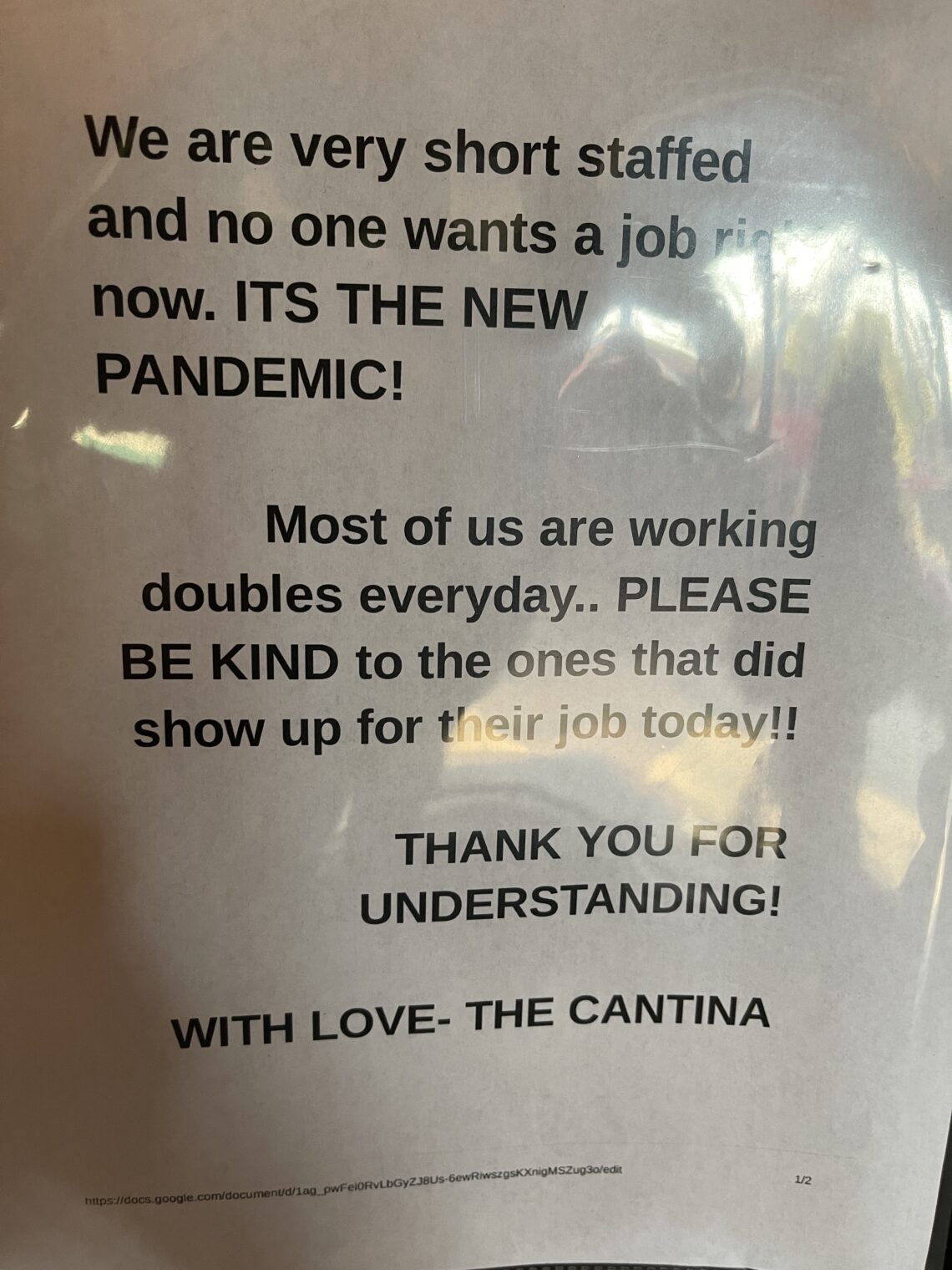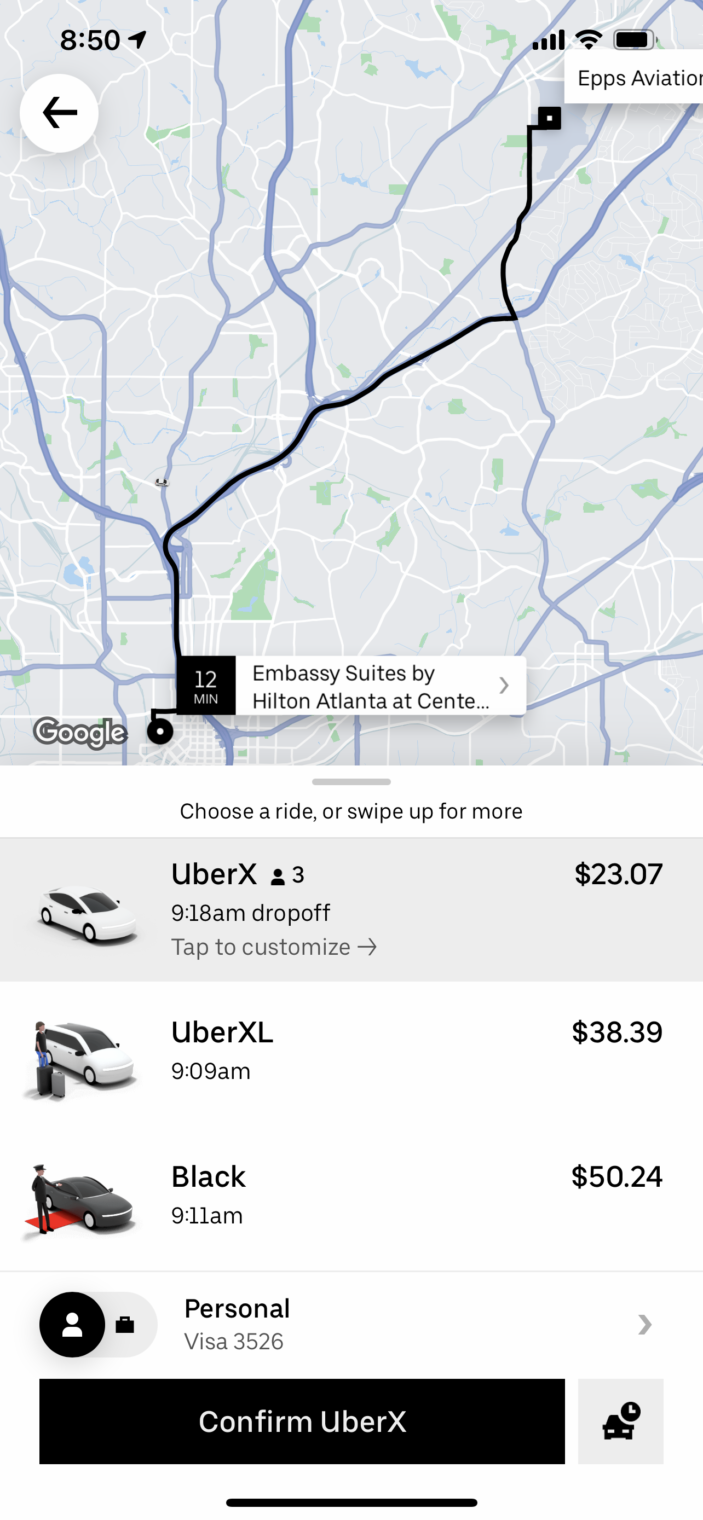We are very short staffed and no one wants a job right now
“Biden and Republicans Spar Over Unemployment as Job Gains Disappoint” (NYT):
The president said he saw no measurable evidence that a $300 federal boost in unemployment benefits was hurting the labor market, amid criticism from conservatives and business groups.
From a Mexican restaurant in Asheville, North Carolina (Biltmore Village, actually) last month. The sign on the door: “We are very short staffed and no one wants a job right now. … ITS THE NEW PANDEMIC! Most of us are working doubles everyday.. PLEASE BE KIND to the ones that did show up for their job today!!”
Is it better elsewhere in the nation? A friend owns a multi-state chain of restaurants. April 30, 2021 email from him:
It’s impossible to hire people right now. The people that want jobs and want to work have them. Everyone else is happy to collect unemployment, which, apparently, can still pay you damn close to what you were making pre pandemic. We post applications and get piles of responses. None show for interview. Turns out you have to approve you ‘applied’ not ‘interviewed to keep the checks flowing.
Anecdotally, it has been difficult to get Ubers and drivers say that their peers have quit to collect unemployment, welfare, etc. Uber XL pays enough to compete with Uncle Joe and therefore it is usually easier and quicker to get an Uber XL (minivan or pavement-melting SUV). We used Uber around Atlanta in mid-April and it was often slow to get any kind of ride, but 10 minutes faster to get an XL than a regular UberX. Example from a downtown location where, pre-coronapanic, you’d expect a regular Uber to be available in 2 minutes, not 12:
We’re currently fixing up a house in order to sell it. There are a lot of tradespeople happy to work, but only if paid in cash. They say that they don’t want to upset their unemployment benefits.
The New York Times did an analysis of the $600/week supplemental dole a year ago (“Workers in more than half of states will receive, on average, more in unemployment benefits than their normal salaries”):
Now that the supplemental dole has been cut to $300 per week, in theory working should pay a little more than not working. In practice, though, the American collecting unemployment can do some work for cash and end up with a higher spending power. Also, not working might be a lot more fun than working, depending on the job. Maybe at $300/week plus the standard unemployment check the overall lifestyle is better even if spending power is a little lower. If the unemployed person’s slightly lower reportable income results in lower prices for means-tested housing and means-tested health insurance, spending power might actually be higher.
What does the Bureau of Labor Statistics have to say? Americans have been increasingly averse to work starting in 2009 (see also Book Review: The Redistribution Recession):
Related:
- Donutnomics during the Coronaplague
- Fast-food economics in Massachusetts: Higher minimum wage leads to a shorter work week, not fewer people on welfare
- Work versus Welfare trade-off (calculated before the recent enhancements, but working at the median wage yielded less spending power than collecting welfare in Massachusetts, for example (though having sex with a dentist and harvesting the child support would typically be a better plan!))









